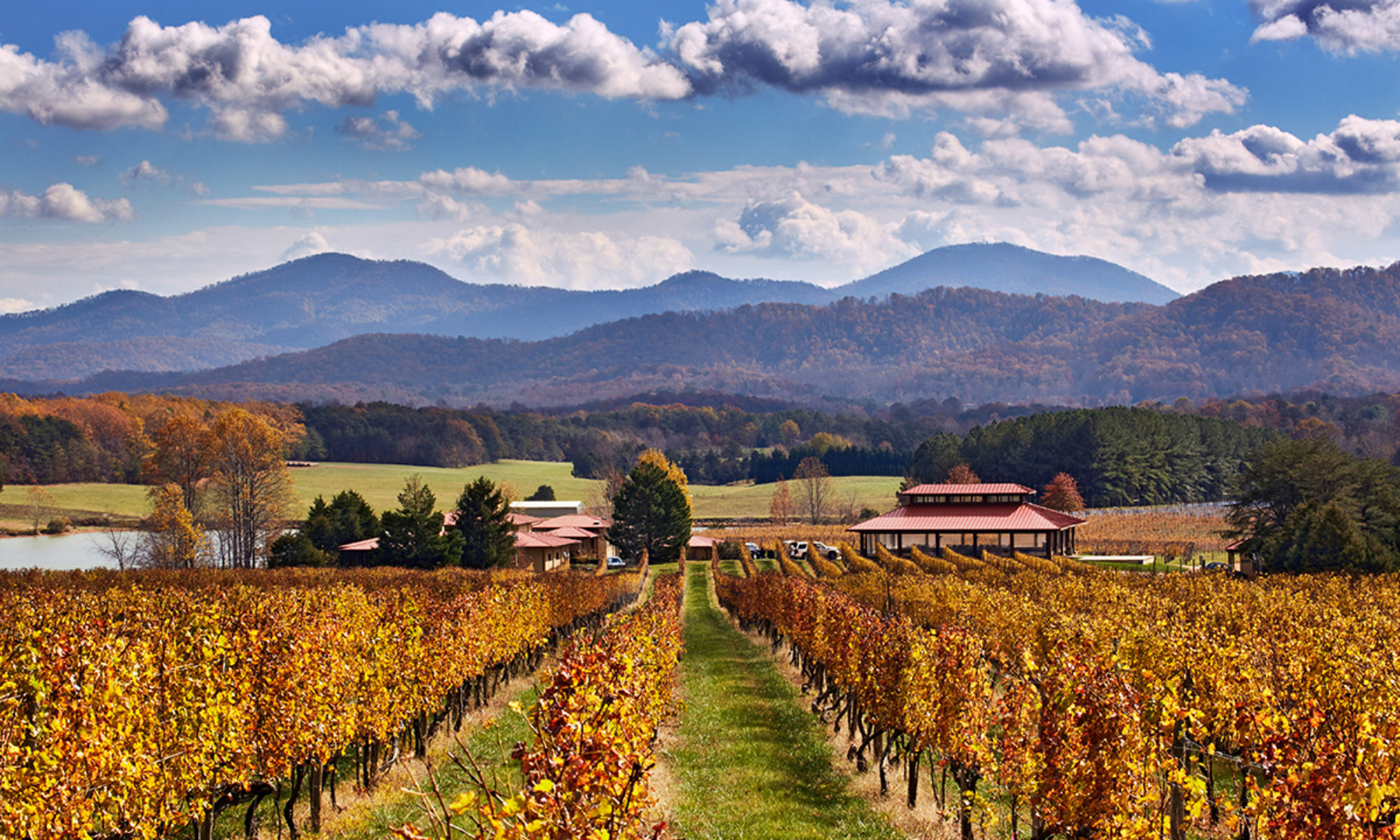Located in Clover, Halifax County, small and family-owned vineyard and winery. Milt McPherson and Sandy Lingon planted their vines in 2002, and opened the Hunting Creek Vineyards tasting room in their log cabin home in 2009. A larger tasting facility on the property recently opened. Both owners had a background in health care. Nearby Hunting Creek is a tributary of the Staunton River.
Wine. Tier III. The mostly single-varietal Hunting Creek wines have probably the best names of any Virginia wines, though they may leave one confused as to whether one is wine tasting or attending a religious revival. Names include Decadence (Petit Verdot and Viognier), Envy (Petit Verdot), Repentance (Cabernet Franc), Temptation (Merlot), Confession (Pinot Gris), and Innocence (Traminette). Presumably the order in which one takes these up matters. The property’s 5 acres of vineyards grow Merlot, Petit Verdot, Malbec, and Viognier. The family partners with area vineyards, Front Porch and Pinehaven, to purchase locally grown quality grapes to expand selections. Son Jeremy was the co-winemaker until moving to Loudoun County to make wine at Creek’s Edge.
Setting. The tasting room has been located in the family’s log cabin home. In 2019 The Barn, transplanted from an old farm in upstate New York, opened as a larger tasting and events venue. Plenty of outdoor seating by the vines in good weather. Open Saturdays, and by appointments; always good to call ahead to double check that the Tasting Room is open.
Stories. Virginia’s Log Cabin Era. Log cabins are as American as apple pie, and may be the most enduring symbol of life in early frontier America. The first log cabins in colonial America were reputed to be those of New Sweden along the Delaware River, where settlers from forest-covered Scandinavia had grown up in such houses. The first home of the majority of the immigrants who came to the colonies and to early 19th century America was a log cabin. America at the time had plenty of forests, and with abundant wood these structures were relatively quick to build, durable, and even transportable. Several future presidents were born in log cabins, most famously Abraham Lincoln. The log cabin became a symbol of humble origins. They were built with logs laid horizontally and interlocking the ends with notches. Very early cabins in Virginia are said to have had no chimneys or fireplaces. The fire burned on the dirt floor and the smoke escaped through a hole in the roof; later cabins were built with fireplaces outside their walls. On the frontier with a risk of attack windows were dangerous and few cabins had them. Because glass windows were an absolute luxury, heavy sliding shutters were used, instead, for winter weather. The spaces between the logs were chinked in early cabins with mud, moss, and, sometimes, animal hair, mixed together. In log cabin days, on completion of the building there was a housewarming, with fiddling and attended by those who helped erect the cabin, their families, and all the neighbors. Let looking at the McPherson cabin at Hunting Creek take you back a few centuries. Drinking the wonderfully-named Hunting Creek wines, calling out such a variety of religious emotions, can even make you feel part of the Great Awakenings of the 1740s and 1750s, when thousands would leave their log cabins to walk to country fields to hear itinerant preachers (leaving aside the small point that the Revivalist preachers generally discouraged alcohol drinking). Or even better come at harvest time, when the McPhersons revive another tradition of log cabin days, getting neighbors and other volunteers to bring in the grapes.
